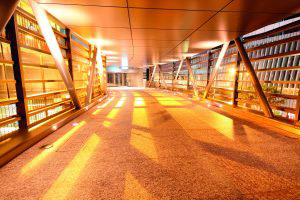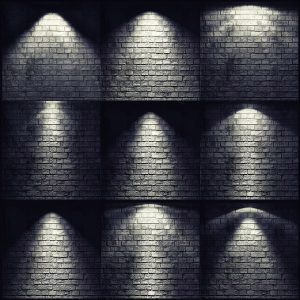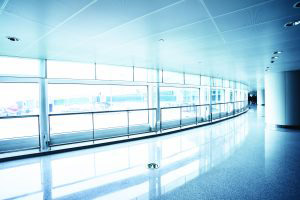







Mackwell discuss what to consider regarding photometric performance of emergency lighting.
With advances in LED and semiconductor technology, considerations for emergency lighting have changed as light sources are brighter with much reduced power consumption and luminaires become smaller in size.
Here we take a look at the key considerations to make when planning an emergency lighting scheme. First of all it is important to understand the application and know how the space will be used. Look at the optics used, not the lumens, and study spacing table information. Model the space and see how luminaires perform and ensure the scheme is safe and compliant by following local standards and regulations.
Optics
An increase in luminous flux does not always give a proportionally linear increase in emergency lighting spacings.? Higher lumen output does not guarantee uniformity and may result in more luminaires being specified to make up for this.? This can lead to an increase in costs for the overall project with more luminaires being required.? Luminaires with tailored optics can ensure optimum distribution to achieve maximum spacings, which can result in a lower cost of ownership per square metre.
Thermals
Even with a carefully designed LED lamphead, it will still have an optimum performance point. Simply increasing LED power consumption will not continue to give a linear increase in luminous flux.? Unnecessary power consumption results in an inefficient product that may require additional battery capacity.

Legacy
Early LED emergency lighting fixtures often delivered around 50lm (Mackwell M100). This was able to deliver a compliant emergency lighting solution with spacings of around 6m at typical ceiling heights. ?Still a technically and commercially viable performance.? Performance has increased over time and this shouldn’t mean we focus on just delivering a higher lumen output, instead it should mean we use fewer cells and often a lower capacity to meet duration.? The reduced footprint of the luminaire means less impact on the space, resulting in the emergency lighting only being noticed when it is required – in emergency operation.? Technology has advanced at such a rate that luminaires are much smaller in size, meaning the same lumen output can be achieved with a much smaller device.? This is great for both conversions and standalone luminaires.
Performance
Improvements in semiconductor technology can now provide luminous flux in excess 180 lms per Watt however, as previously mentioned LED output should never be used as a benchmark of emergency performance. An example would be XY-FI which is a very compact package that delivers 95lm at power levels around 0.9W. ?As a performance package this regularly out-performs higher lux packages as all the lumens are managed within the optics to achieve optimum performance. When compared to a traditional conversion of an LED downlight XY-Fi will often result in fewer conversions with a significant cost saving to the customer.

Efficiency
Lower lumen packages tailored for emergency lighting schemes make use of lower power control gear – smaller lampheads, smaller drivers, and smaller batteries. Unobtrusive, low-key designs more applicable for sensitive aesthetics.? The low power consumption of LED emergency lighting opens up the opportunity to other platforms that are an alternative to mains powered systems, such as PoE and distributed DC infrastructures.? These still deliver the same lumen output and spacings as traditional mains systems, but mean that emergency lighting can evolve in unison with general lighting and smart building infrastructures.
Application
In order to get the best from your emergency lighting scheme it is important to know the application – make sure the type of lamphead / optic is the best suited for the job. – Local Standards, Mounting Heights, Escape Route, Anti-Panic, High Risk.? Look for emergency luminaires that are application specific where necessary, such as high bay or corridor.
Risk assessments will help in determining certain requirements to meet compliance.? Work with the Architect and end user if necessary to determine the use of the space as this will help determine how best the scheme should be designed and maintained throughout the life of the installation

Simulation
With careful planning and accurate modelling of the space in which emergency lighting is to be installed, the lighting designer may find that initial estimations based on generic spacing tables are still in excess of emergency light levels required, or with careful positioning, spacings can be further optimised.? This will deliver further cost savings and ensure the scheme is safe, compliant and designed to the application.

Copyright 2006-2025 Shanghai Sinoexpo Informa Markets International Exhibition Co., Ltd. All rights reserved